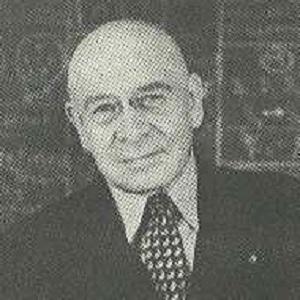Quick Facts

| Full Name | Alfred Korzybski |
| Occupation | Philosopher |
| Date Of Birth | Jul 3, 1879(1879-07-03) |
| Age | 147 |
| Date Of Death | March 1, 1950, Lakeville, Salisbury, CT |
| Birthplace | Poland |
| Country | Poland |
| Horoscope | Cancer |
Alfred Korzybski Biography
| Name | Alfred Korzybski |
| Birthday | Jul 3 |
| Birth Year | 1879 |
| Place Of Birth | Poland |
| Birth Country | Poland |
| Birth Sign | Cancer |
| Parents | Wladyslaw Korzybski, Helena Rzewuska |
| Spouse | Mira Edgerly |
Alfred Korzybski is one of the most popular and richest Philosopher who was born on July 3, 1879 in Poland, Poland. Remembered for his foundational work in the philosophical and cognitive science field of general semantics, this early twentieth-century scholar coined the famous phrase “the map is not the territory” to describe his theory that representations of reality do not themselves constitute reality.
In the late 1930s, American Beat Generation author William S. Burroughs , then only twenty-five years old, attended one of Korzybski’s general semantics workshops.
He grew up in an affluent and highly educated family in Warsaw, Poland. He later settled in the United States and began a more than three-decade marriage to portrait painter Mira Edgerly.
Alfred Korzybski Net Worth
| Net Worth | $5 Million |
| Source Of Income | Philosopher |
| House | Living in own house. |
Alfred Korzybski is one of the richest Philosopher from Poland. According to our analysis, Wikipedia, Forbes & Business Insider, Alfred Korzybski 's net worth $5 Million. (Last Update: December 11, 2023)
After studying engineering at the Warsaw University of technology, he served in the Russian Army as a World War I-era intelligence officer. He published his debut philosophical work, Manhood of Humanity, in the early 1920s.
He founded and headed the Institute of General Semantics, which operated out of Chicago, Illinois, until the mid-1940s, at which point it transferred its headquarters to Lakeville, Connecticut.
Height, Weight & Body Measurements
Alfred Korzybski height Not available right now. Alfred weight Not Known & body measurements will update soon.
Who is Alfred Korzybski Dating?
According to our records, Alfred Korzybski married to Mira Edgerly . As of December 1, 2023, Alfred Korzybski’s is not dating anyone.
Relationships Record : We have no records of past relationships for Alfred Korzybski. You may help us to build the dating records for Alfred Korzybski!
Facts & Trivia
Alfred Ranked on the list of most popular Philosopher. Also ranked in the elit list of famous people born in Poland. Alfred Korzybski celebrates birthday on July 3 of every year.
What is general semantics by Alfred Korzybski?
general semantics, a philosophy of language-meaning that was developed by Alfred Korzybski (1879–1950), a Polish-American scholar, and furthered by S.I. Hayakawa, Wendell Johnson, and others; it is the study of language as a representation of reality.
What is the theory of general semantics?
General semantics is concerned with how events translate to perceptions, how they are further modified by the names and labels we apply to them, and how we might gain a measure of control over our own responses, cognitive, emotional, and behavioral.
What is Alfred Korzybski contribution to the development of semantics?
Korzybski was the originator of general semantics (q.v.), a system of linguistic philosophy that attempts to increase humanity’s capacity to transmit ideas from generation to generation (what Korzybski called man’s “time-binding capacity”) through the study and refinement of ways of using and reacting to language.
What is time-binding in general semantics?
Time binding can refer to. human progress as seen from the perspective of general semantics, an educational discipline created by Alfred Korzybski in the 1930s. time bind, a sociological concept relevant to family and labor, introduced by Arlie Russell Hochschild in the 1990s.
What are the three main areas of semantics?
The field of semantics has three basic concerns: the relations of words to the objects denoted by them, the relations of words to the interpreters of them, and, in symbolic logic, the formal relations of signs to one another (syntax).